
Air Power in Ukraine Conflict

The global attention continues to be focused on the conflict between the two largest nations of Europe, Russia and Ukraine. The war began with contest of influence over Ukraine. The Western powers were trying to bring Ukraine into European Union (EU) and NATO fold. It was unacceptable for Russia to have NATO sitting directly on its border.
After the current president Volodymyr Zelenskyy, took the oath of office on 20 May 2019, amendments were made to the Constitution of Ukraine, which enshrined the irreversibility of the country’s strategic course towards EU and NATO membership. This was the final nail. Henry Kissinger, and many others had warned that “to Russia, Ukraine can never be just a foreign country” and that the West, therefore, needs a policy that is aimed at “reconciliation”. It was like the “Cuba” moment for them. Russia felt being ring-fenced by potentially hostile powers, and cautioned the West against it. On 24 February 2022, Russia invaded Ukraine.
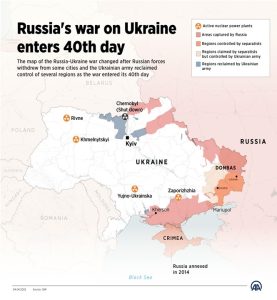
Russian Ground Offensive
Russia’s geostrategic aim is to have a Russia friendly government in Ukraine. Since that may not always be possible, Russia has openly stated that its interest lies in securing Russia friendly areas east of Dnieper River. It could even mean bifurcating the nation. To achieve the same, it began its ground offensive in the north with its troops in Belarus to move towards the political capital Kiev via Chernihiv and Chernobyl. This thrust-line faced great resistance, got bogged down and finally Russian troops began partial withdrawal. The Ukrainian resistance was possible due to high nationalist fervor and the anti-tank and anti-aircraft weapons supplied in large numbers by the Western countries.
The Russian thrust from the east was the main offensive. Aim was to occupy and liberate the Russia friendly Luhansk and Donetsk regions. Raging battles were also fought for Kharkiv town (second largest in Ukraine). The offensive from the south was to block Ukraine’s access to Black Sea. Major thrust was from the port of Mariupol, Odessa and Kherson. Major battles were fought in Zaporizhzhia.
Russian military aim was to target mostly Ukrainian military to capitulate resistance. Communication systems, including TV towers, were being targeted to control narrative. Since ultimately the nation would have to be governed, the basic infrastructure was not being targeted. Some civilian buildings like schools, commercial centers and hospitals that were reportedly being used as shields for military were also targeted. The overall ground war seems moving in Russia’s favour, albeit taking longer than planned.
Calling the ‘N’ word
In the very beginning of the war, Russia used the ‘N’ word implying a nuclear response incase NATO was to join the war. It is important to recall that Ukraine had nuclear weapons when Soviet Union broke up. But they renounced the same. Some are asking if that was a good decision. If they had nuclear weapons today, would Russia have invaded in this manner? Poland has just announced that it would be open to having American nuclear weapons being stationed on its soil. The seven-decade old nuclear deterrence doctrines are being put to test and are being revisited. More countries now want nuclear weapons.
Ukrainian Air Force and Aircraft Industry
The war has seen mostly identical aircraft and systems of original Russian origin pitted against each other. Ukraine had the world’s 27th largest air force and the 7th largest in Europe. They had a significant domestic defence industry, including the original Antonov aircraft plant.
The Ukrainian Air Force (UkrAF) is manned by 36,300 personnel and had 225 aircraft. These included nearly 100 fighters comprising MiG-29, Su-24, Su-25, Su-27, L-39, and some have also been modernized. These were used mostly in air defence operations. Ukraine has also been using American and Turkish UAVs. They had significant AD systems including S-300 missiles with nearly 500 missiles in addition to the Western Man Portable AD Systems (MANPADS).
The world was shocked to see world’s largest plane (650 ton) An 225 or ‘Mriya’ (The Dream), of which only one was built, destroyed in crossfire between the two sides. Antonov Design Bureau, based at Kiev, has built nearly 22,000 aircraft, and nearly a thousand still operating. India once operated An-12s and even now operates nearly a 100 An-32.
Russian Air Force
The Russian Air Force (RuAF) is the second largest in the world with nearly 3,800 aircraft. Eight Bomber squadrons operate Tu-22M3/MR, Tu-95MS, and Tu-160 bombers. 37 Fighter squadrons include variants of MiG-29, MiG-31, and Su-27. Russia has over 100 Su-35 aircraft. There are 27 Attack squadrons operating the Su-24, Su-25 and Su-34 variants. 10 Attack-cum-Reconnaissance squadrons operate Su-24s and MiG-25RB. They have only around 14 fifth-generation Sukhoi Su-57 aircraft which are still under operational evaluation. Russia operates a squadron each of A-50/A50-U aircraft and FRA Il-78/Il-78M. At any given time, Russia has around 300 modern combat aircraft normally stationed in the Western and Southern Military Districts – within range of Ukraine. They had also relocated regiments from elsewhere in Russia as part of its military build-up prior to the invasion.
Top End Equipment Not Deployed
While Russia has deployed a large number of troops and military platforms, they have yet to make use of any of their advanced weaponry. Over 12,000 Russian troops are said to have either been killed or injured so far and Ukraine claims to have destroyed at least 49 fighter jets, 81 helicopters, 335 tanks, 1,105 armored vehicles, 123 artillery systems and more.
Typical Air Operations
Military aircrafts are used in both offensive and defensive purposes. In offensive role, these aircraft are used in destroying enemy’s vital installations, air strips, ordnance depots and supplies, interdiction of enemy lines of communication, close air support to own land forces and also deters the threats of enemy air strike. In defensive role, it provides defence of air space.
In naval warfare, military aircrafts play a significant role to detect and neutralize submarines and warships to keep the seacoast free from enemy attack. Military aircrafts also provide logistic supply to forward bases, and conducting airlift (cargo and troops). Military aviation includes fixed wing aircraft, rotary-wing aircraft (RWA) and unmanned aerial vehicle (UAV). From the early days of military aviation, it has been realized that air power supremacy is vital for winning a war as well as maintaining the sovereignty of any country.
Attributes of Air Power
Whoever controls the air generally controls the surface. Air Power is an inherently strategic force. Air Power is primarily an offensive weapon and provides deterrence and coercive power. Air Power produces physical and psychological shock by dominating the fourth dimension-time. Air Power can conduct parallel operations at all levels of war, simultaneously. Precision air weapons have redefined the meaning of mass. Air Power’s unique characteristics necessitate that it be centrally controlled by airmen. Technology and air power are integrally and synergistically related. Air Power includes not only military assets, but an aerospace industry and commercial aviation.
Air Campaign in Ukraine
Russians had lot of preparatory time. They should have done enough Intelligence Surveillance and Reconnaissance (ISR). They should have hopefully known the Order of Battle (ORBAT) fully. Russia was expected to achieve air superiority, but that does not seem to have happened. The AWACS and AEW&C have hardly been seen. Maybe they were scared that they may be shot. Fighter strikes have also been limited. Air and ground launched Cruise missiles and Ground based Multi-Rockets have been used more.
Suppression of enemy air defences should have been done first to knock of the radars and missile batteries. Again, that seems not fully achieved. Ukraine is a big country, and has sizeable Armed Forces and large population is against the Russians. The main target for Russia had been the political centers. Kharkiv which is the second largest city was closest from Russian side. Also in the east are pro-Russian population and republics. So Kharkiv was the first place for attack. The city was finally encircled. It is not in Russian interest to get into urban warfare. That would bog them down.
RuAF (VKS) could fly limited sorties in the north due bad weather, but got hammered by MANPADS and lost significant number of aircrafts. Helicopter Gunships were used for Counter Surface Force Operations (CSFO). We saw the video footage of a Russian Mi-25 being shot by a stinger missile. Surprisingly the Russian aircraft did not use Missile Warming system or the IR flares to ward of the missiles. Russian ISR and Electronic intelligence components are not delivering, perhaps spread too thin across. RuAF support is focused on CAS rather than extended SEAD, here again limited by lack of multi role platforms and operational exposure/ training standards. Since war is all in Ukraine only, there was not air defence requirement for Russia, except to destroy any aircraft that tried to engage in combat with them.
Perceivable attempt to use unguided munitions by the Russians indicates either the Russians are running out of PGMs or conserving what they have. We saw Russia losing top-of-the-line Sukhois to attrition when employed as basic strike aircraft. The ATGM/ MANPADs success by the Ukrainians reflects that the tank is a baggage without an active protection system (APS), as are the airborne platforms a viable target without an integrated ASPJ suite, both not being able to carry out their core tasking in years ahead without these layers.
Where are the Russian UAVs? Very limited use has been observed. Never saw UCAVs like the Orion. Lack of UAVs, especially for the protracted and persistent SEAD and interdiction missions may be hurting the Russians. Meanwhile, the Naval Blockade and Maritime Air Power could be used effectively because Crimea had been annexed in 2014.
Cyber warfare and electronic warfare are important. They seem to have been under-utilized. Even the stringer missiles require some radar input as warning of incoming threat and direction. Obviously, they have not been jammed. One also did not see IR flares being used against Stinger missiles. Extensive use of videos by Ukrainian population made effective psychological warfare. The Western world greatly supported Information Warfare through satellite communications, and internet that was kept live. Zelenskyy, with the backing of the West, has led from the front. 85% of the Ukrainians want to live in a democratic set up with greater freedom and democratic values.
Air Engagements
There have been air engagements. Of course, we heard about the “Ghost of Kiev”, the nickname given to a ‘Morale Booster’ fictitious, urban legend or war propaganda, a MiG-29 Fulcrum flying ace credited with shooting down six Russian planes in the Kyiv offensive on 24 February 2022. The Russian Defence Ministry has claimed that over 100 air defence systems and over 90 Ukrainian aircraft have been disabled or destroyed. At least 25 UkrAF aircraft have been lost till date. Most UkrAF losses were on the ground. A few have been shot in the air. Most Russian aircraft losses have been to Ground-based AD Systems. Many well-known top-notch Russian and Ukrainian pilots lost their lives in aerial engagements.
India’s Strategic Autonomy
India and China were careful not to take sides. Many Middle Eastern U.S. allies like Israel, the United Arab Emirates (UAE), and Egypt have not condemned Russia in categorical terms in the ongoing crises. In South Asia, in addition to India, Pakistan, Sri Lanka, and Bangladesh also abstained from UN voting.
Indian ‘Neutrality’ on Ukraine clearly shows that New Delhi is not a passive fence-sitter this time; instead, it is an active player with both a principled stand and shrewd realpolitik. It is generally a wait and watch situation for many as situation remains fluid and full of “uncertainties”. Nearly 20,000 Indian students studying in Ukraine were supported for exit from the war-torn country. An air-train, “Operation Ganga”, was established by Air India and Indian Air Force (IAF) to fly out stranded Indians from the Ukraine’s neighboring countries to India. It won global praise.
General Lessons for India
From this multi-prong global power-play, it is emerging clearly that there is no soft power without hard power. India needs to continue to build our hard power. Nuclear deterrence continues to play. Whether there is an international treaty or not, ‘friendships between countries’ will always come second to a nation’s own security / self-interest. Self-sufficiency in arms manufacturing, as much as possible, is an absolute necessity.
Anything can be weaponised, from financial protocols like SWIFT, civilian airspace, social media based business to international sporting bodies. India should try to have at least one globally powerful platform in all these areas. Private companies (like Google, Facebook, and others) will take political sides. Figure out how India can ring-fence against it by supporting Indian domestic equivalents. Lectures on human rights, freedom of speech, etc. are pure geopolitical tools, and best ignored in self-interest.
The so-called global rules-based-order is being breached by all sides. It is time that Indian Air Force gets back to the authorized 42 fighter squadrons from current low of 31.
*****************
Disclaimer
The opinions expressed in this article are the author’s own and do not reflect the views of Chanakya Forum. All information provided in this article including timeliness, completeness, accuracy, suitability or validity of information referenced therein, is the sole responsibility of the author. www.chanakyaforum.com does not assume any responsibility for the same.
Chanakya Forum is now on . Click here to join our channel (@ChanakyaForum) and stay updated with the latest headlines and articles.
Important
We work round the clock to bring you the finest articles and updates from around the world. There is a team that works tirelessly to ensure that you have a seamless reading experience. But all this costs money. Please support us so that we keep doing what we do best. Happy Reading
Support Us



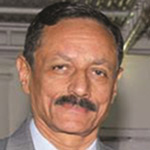

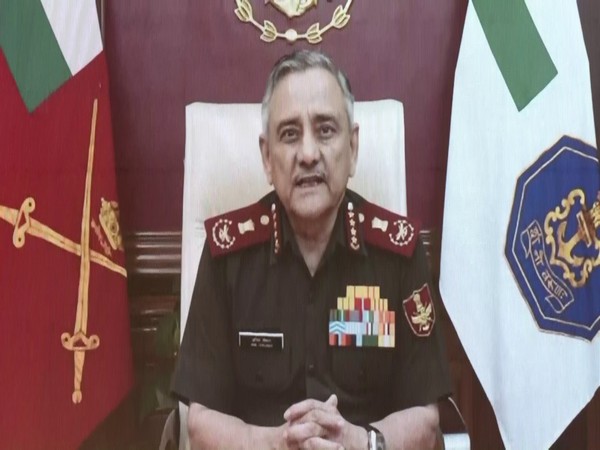
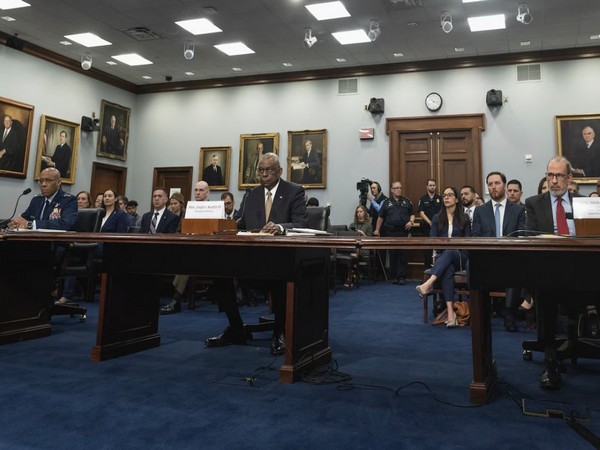

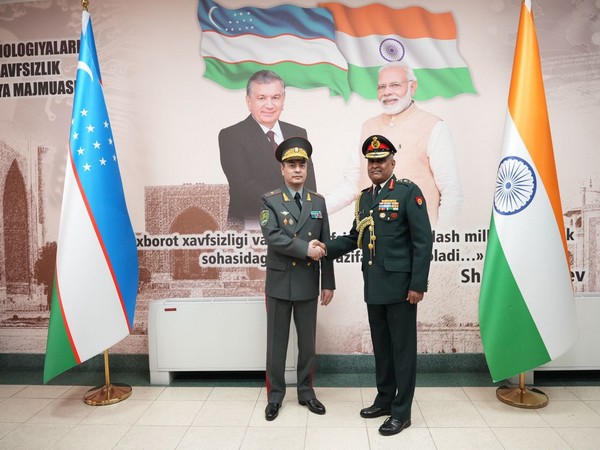

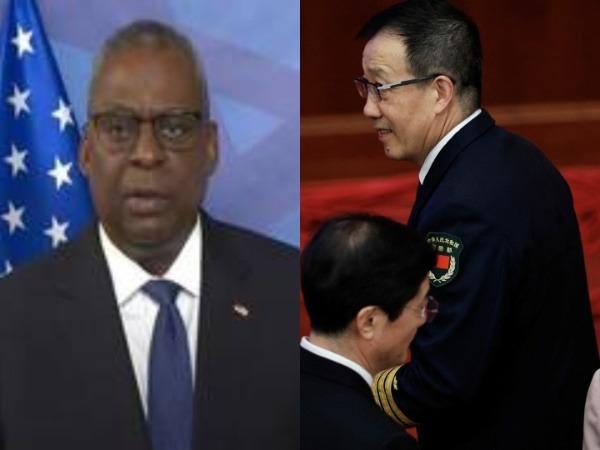
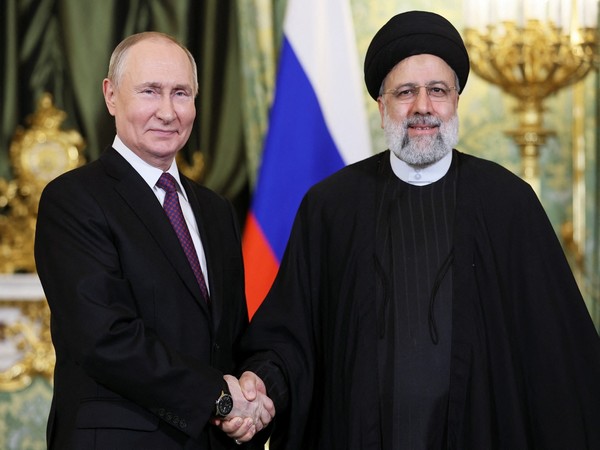
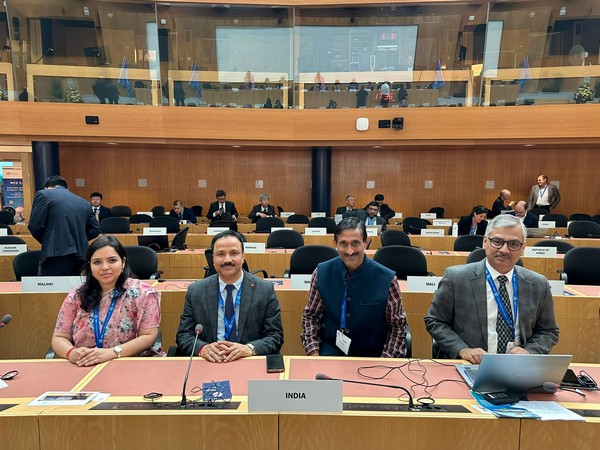
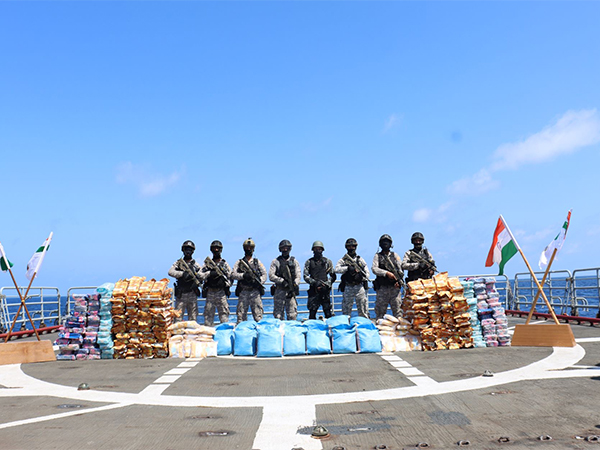







POST COMMENTS (0)